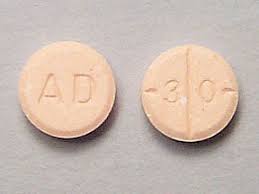Adderall
Adderall: Uses, Safety Info, Side Effects & Dosage
Adderall is a prescription medication that contains two active ingredients, amphetamine and dextroamphetamine. It belongs to a class of drugs called central nervous system stimulants, and is primarily used to treat attention deficit hyperactivity disorder (ADHD) and narcolepsy. Adderall: Uses Safety Info Side Effects & Dosage
Adderall works by increasing the levels of certain neurotransmitters, such as dopamine and norepinephrine, in the brain. These neurotransmitters are involved in regulating attention, motivation, and other cognitive functions.
While Adderall can be effective for treating ADHD and narcolepsy, it can also have potential side effects, including anxiety, agitation, insomnia, loss of appetite, and increased heart rate and blood pressure. Additionally, because of its stimulant effects, it can be habit-forming and has the potential for abuse.
It is important to use Adderall only as prescribed by a healthcare provider and to be aware of its potential risks and benefits.
Uses Of Adderall
Adderall is a prescription medication that is primarily used to treat attention deficit hyperactivity disorder (ADHD) and narcolepsy.
Here are some common uses of Adderall:
- ADHD: Adderall is used to treat ADHD, which is a neurological disorder characterized by inattention, hyperactivity, and impulsivity.
- Narcolepsy: Adderall is also used to treat narcolepsy, a sleep disorder that causes excessive daytime sleepiness and sudden episodes of sleep.
- Cognitive Enhancer: Some people use Adderall off-label as a cognitive enhancer, to improve focus, productivity, and academic performance.
- Depression: Adderall may also be used off-label to treat depression that does not respond to other treatments.
It is important to note that Adderall is a controlled substance due to its potential for abuse and dependence, and it should only be used under the guidance of a qualified healthcare provider.
Safety Info
Adderall is a medication used to treat attention deficit hyperactivity disorder (ADHD) and narcolepsy. It contains a combination of two central nervous system stimulants, amphetamine and dextroamphetamine. While it can be an effective treatment for these conditions, it is important to be aware of its potential side effects and risks. Adderall: Uses Safety Info Side Effects & Dosage
Here are some important safety information about Adderall:
- Do not take more than the prescribed dose or use it for longer than recommended.
- Adderall is a controlled substance and has the potential for abuse and dependence.
- Adderall can cause side effects such as nervousness, restlessness, agitation, headache, nausea, vomiting, and insomnia. These side effects are usually mild and go away on their own, but if they become severe or persistent, contact your healthcare provider.
- Adderall can interact with other medications, including certain antidepressants and blood pressure medications. Always inform your healthcare provider of all medications you are taking, including over-the-counter medications and supplements.
- Adderall may affect the ability to drive or operate machinery, so it is important to avoid these activities until you know how Adderall affects you.
- If you experience symptoms such as chest pain, shortness of breath, fainting, or severe headache, seek immediate medical attention.
Always follow your healthcare provider’s instructions when taking Adderall, and never adjust your dose or stop taking it without first consulting with your healthcare provider.
Side Effects & Dosage
It contains a combination of amphetamine and dextroamphetamine, which are stimulant drugs that affect chemicals in the brain and nerves that contribute to hyperactivity and impulse control.
Common side effects of Adderall include:
- Loss of appetite
- Difficulty sleeping (insomnia)
- Nervousness
- Headache
- Stomach pain
- Nausea
- Vomiting
- Dizziness
- Increased heart rate
Less common side effects can include:
- Mood changes
- Agitation
- Hallucinations
- Delusions
- Muscle twitches
- Uncontrollable movements or shaking
- Changes in vision
- Blistering or peeling skin
If you experience any of these symptoms or side effects while taking Adderall, you should contact your doctor right away.
Dosage:
The starting dose of Adderall for ADHD in children aged 6 to 17 years is 5 mg once or twice daily. The dose may be increased by 5 mg per week until an optimal response is achieved. The maximum recommended dose is 40 mg per day.
The starting dose of Adderall for narcolepsy in adults is usually 10 mg per day, taken in the morning. The dose may be increased by 10 mg per week until an optimal response is achieved. The maximum recommended dose is 60 mg per day.
Dosage may vary depending on individual factors such as age, weight, medical history, and other medications being taken. It is important to follow your doctor’s instructions and not exceed the recommended dosage.

